We always work, because it is less a tiresome work than a fulfilling life.
Jesus Gomez Torres
Oaxaca de Juárez is the lively, colorful capital of the Mexican state of Oaxaca and is located in a valley of the Sierra Madre del Sur at around 1550 meters. There it happened that we finally fell for cocoa, as our long-awaited one Tabasqueno Mellow Magic cocoa arrived at our bright orange house in the middle of the city. We unpacked the cocoa, drank it and literally melted away. We hadn't drunk anything that good in a long time. It was immediately clear to Wallo and me that one of our Selection products, has to be about this beneficial liquid, which we wanted to devote ourselves to from now on. Nothing was more obvious than the Molinillo - a traditional cocoa whisk and Mexican craftsmanship through and through.
What is a Molinillo and where does it come from?
First came the research, because we didn't know for a long time that this chic, hand-carved wooden stick, which is traditionally used to froth cocoa, was called "Molinillo". We scoured the World Wide Web for "cocoa spoon" and found nothing. It was not until "Kakaoquirl" that the first references to its actual name, the Molinillo, and with it information and background information about its use, came.
A molinillo is a utensil with a long history, having been made in Mexico for centuries and used to cream and foam cocoa drinks. About 4000 years ago the Omelek invented the kakaw, which was cultivated by the Maya around 2,500-3,000 years ago. By around 1400 AD, a cocoa drink was an essential part of Aztec culture, which they xocolatl called. Originally, plants and simply wooden sticks were used to stir and froth the cocoa. Then, in the 17th century AD, the Molinillo as we know it today was invented by the Spanish colonists in Mexico to facilitate the preparation of their cocoa drink. Since then it has been manufactured and used by hand.
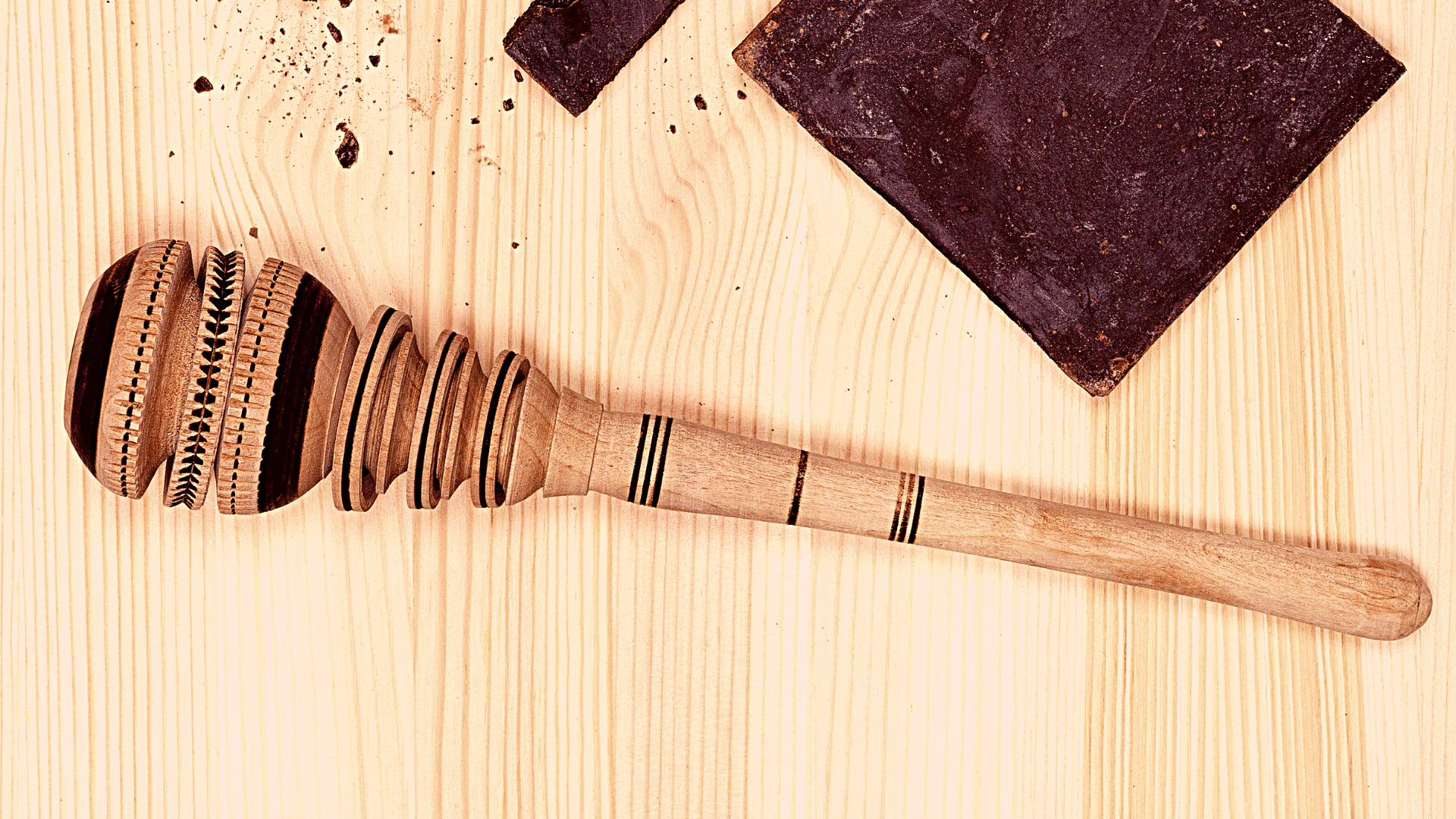
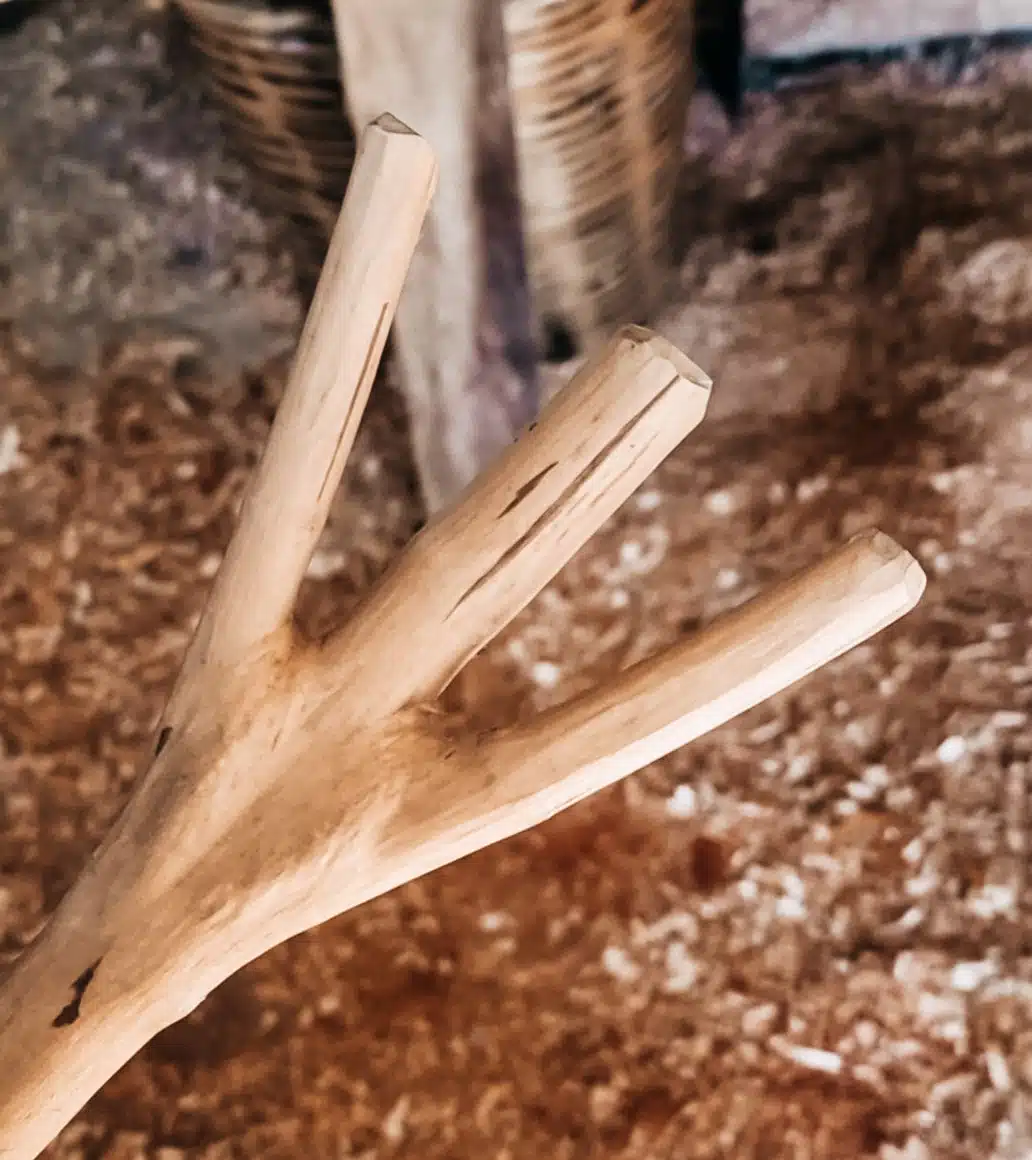
How do you use a Molinillo?
While the water or plant-based milk for the cocoa is slowly warming up in the pot and the cocoa begins to melt, the molinillo is used to stir and crush the cocoa mass to further dissolve the cocoa. When the cocoa has completely melted, take the Molinillo between your palms and start rotating it rhythmically while rubbing your palms together. The texture of the Molinillo gently froths the cocoa while the wooden rings on its shaft set the rhythm as it spins.
Set the right intention
Traditionally, especially in cocoa ceremonies, it is important to use the molinillo with the right intention. Before you start spinning, you should collect yourself, close your eyes, concentrate on your heart space and connect with yourself and your field. Then you start to turn the Molinillo in your own rhythm and your own frequency, as well as the frequency of the set intention, is transferred via the Molinillo to the cocoa, which you then consciously consume and drink.
It all depends on the right Molinillo
Wallo and I are convinced that a product is never just a product, but that the frequencies of its materials and manufacturers are part of it. It was therefore particularly important to us that our Molinillos (like all products from our Selection) are made by hand and with love, under fair conditions and with a conscious and respectful use of natural resources.
Wallo and I then spent hours in the crowded market of Mercado Benito Juárez in Oaxaca. It wasn't enough for us to buy a Molinillo there, we wanted to go to the source. We wanted to get to know the craftsmen behind the market stalls and see and understand their work. It is of course difficult to gain the trust of the market traders as an unknown "gringo". That takes a lot of time and patience, but we didn't have much time in Oaxaca de Juarez at that time. But when I hold on, I hold on and don't give up. I researched and researched and finally found a name: Jesús Torres Gómez, a fourth-generation miller who makes Molinillos. "This is our man!" I thought immediately and we wanted to meet him and his family! In the middle of the research flow, I soon found an address in Las Ánimas, Santa Catarina Ixtepeji, about 1.5 hours drive from Oaxaca in the mountains of the Sierra Madre highlands. How fortunate that almost everything in Latin America can be managed with a messenger program. I found Jesús Gómez Torres' number, wrote a devotional text in broken Spanish and got a reply the same day! I cheered with joy and anticipation, because the next day Wallo and I were allowed to visit Jesús, his family and his small workshop in the mountains.
Jesús Gómez Torres and his family
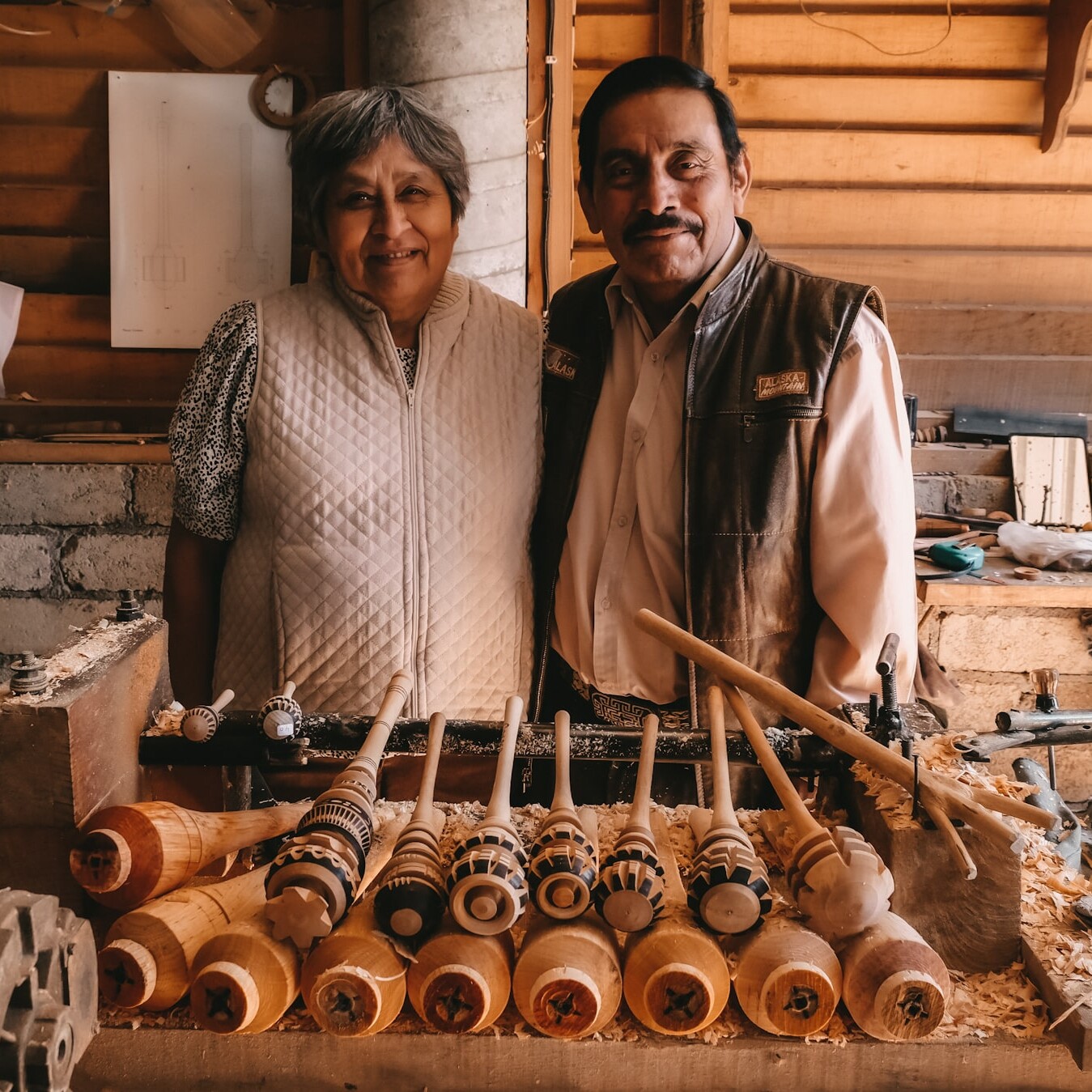
Jesús Gómez Torres, a mill craftsman, is originally from Las Ánimas, Santa Catarina Ixtepeji. Together with his wife, he embodies the third generation in his family dedicated to the production of Molinillos. His children work voluntarily and are already the 4th generation of the small, traditional family business. When we arrive at Jeus's, the first thing we notice is the unbelievable calm of this small piece of earth in the mountains. She calms my pounding heart. My Spanish skills are (still) rudimentary and the result of two rather lazy school years 20 years ago. I'm afraid I won't be able to express myself enough and clutch my notepad with my pre-written Spanish texts tightly.
The air smelled pleasantly fresh, of flowers and pine trees, mixed with the smell of a wood fire heating a kettle in a small stove. The sun pleasantly warms our skin and peace spreads through us. My tension disappears completely when Jesús and his wife Arminda run out of a small, crooked building towards us, beaming. His eyes are big, dark and the wrinkles make us smile, along with his dark mustache. He is shorter than me and wears a large, typical Mexican cowboy hat with a traditional leather vest. He leads us into the crooked building made of wood, corrugated iron and mud and my nose is filled with the smell of freshly cut wood. Arminda smiles shyly at us, while Jesus gets straight to work and proudly raves about himself, his work, his craft and his family - and rightly so.
“The work was started by my grandfather, he taught it to my father and uncle. My father taught me and my brothers to carve wood and in 1970 we started working with lathes powered by electric motors."
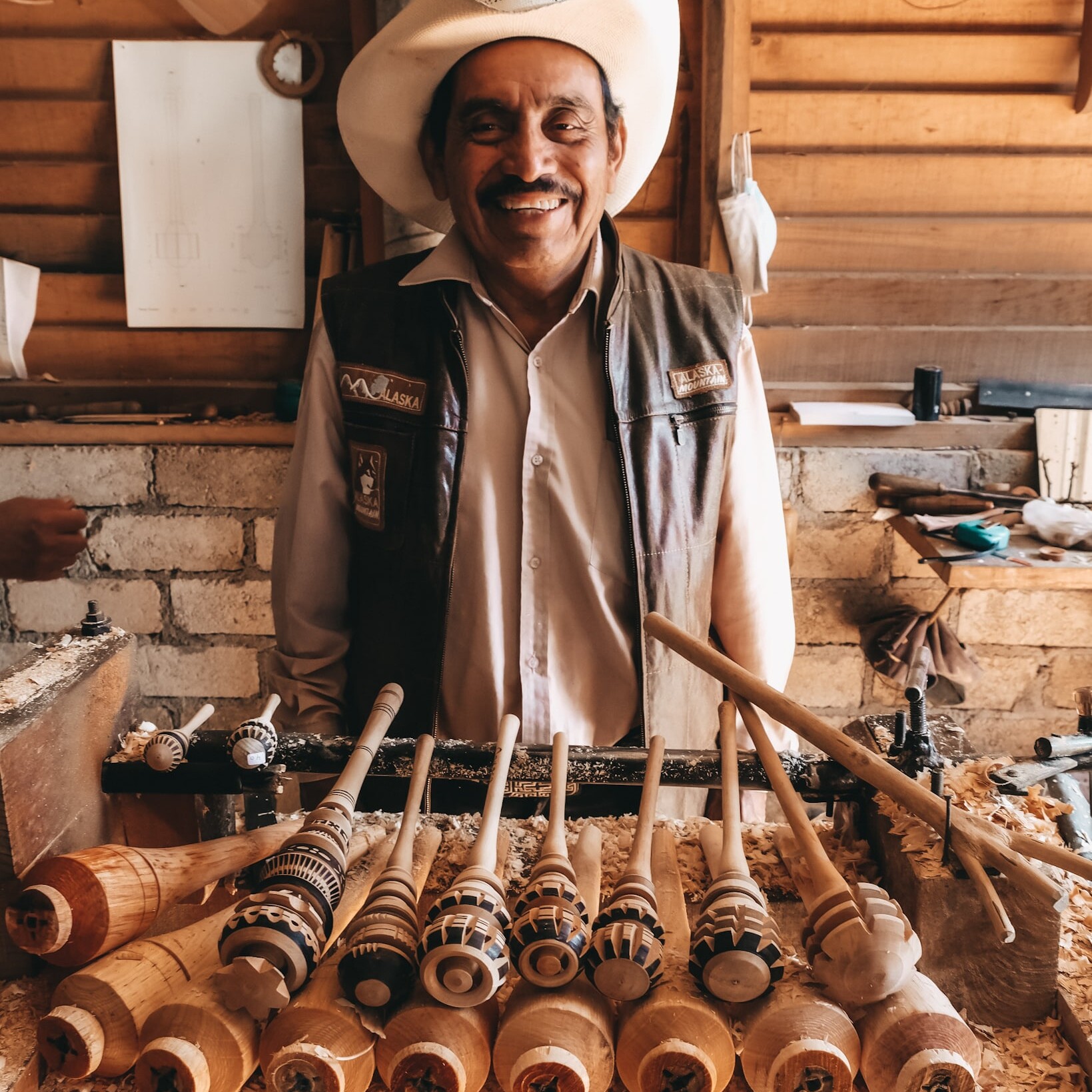
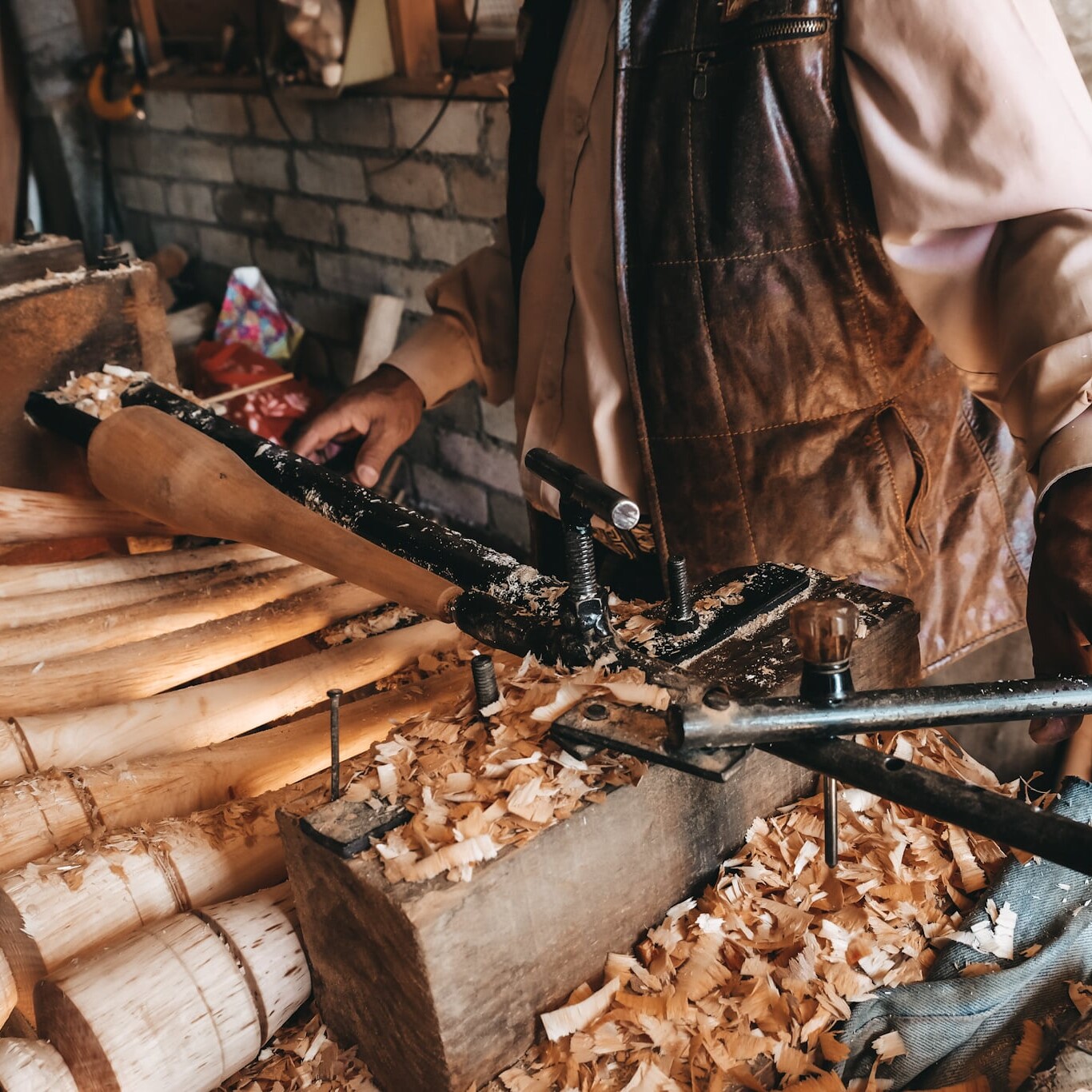
Everyone works under Jesú's leadership, his wife Arminda, his brother-in-law Evencio, his daughter Sandra and occasionally his niece. Jesús tells us that he learned the art of carving pine by hand from his father when he was nine years old. Jesús later studied at high school in the city of Oaxaca, where he discovered that there were lathes that could make his father's job easier. But it wasn't until the 1970s that electricity came to his community. With electricity, he was finally able to start working with lathes, revolutionizing the small family business. Thanks to this lathe, they began to increasingly produce the Molinillo, the product that they sell the most today.
The manufacture of the molinillo
Jesús Gómez Torres and his family work with different types of wood, such as jacaranda, which they source in the central valleys, and ash and ail wood, which they source from certified sawmills in the Sierra Madre. He only uses wood from trees that are marked for felling. Don Jesús is a guardian of his forests, he explains, and is opposed to illegal felling of trees. The wood he works with is certified, which is very important to him. He is the one responsible for choosing the right wood for his production, he explains to us seriously.
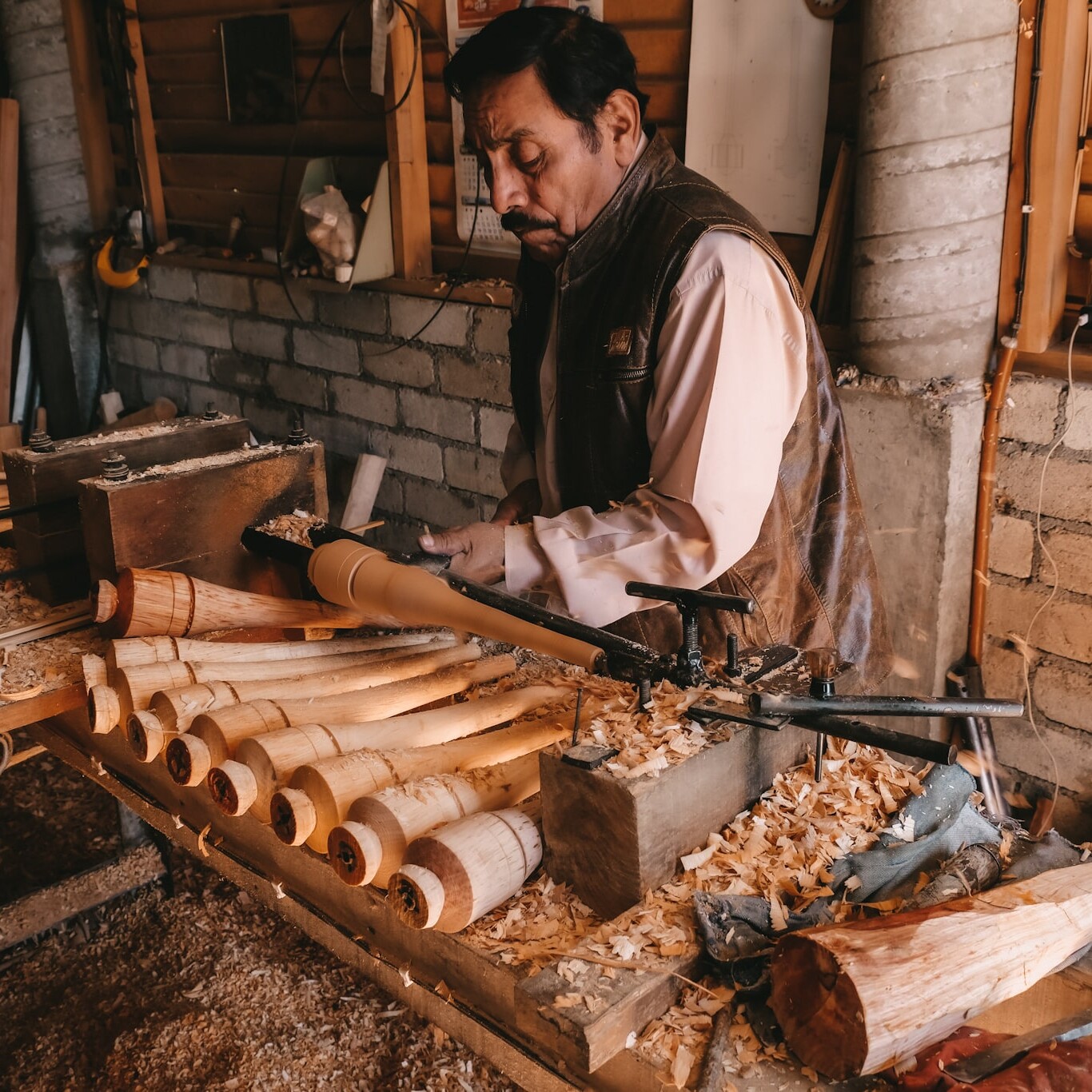
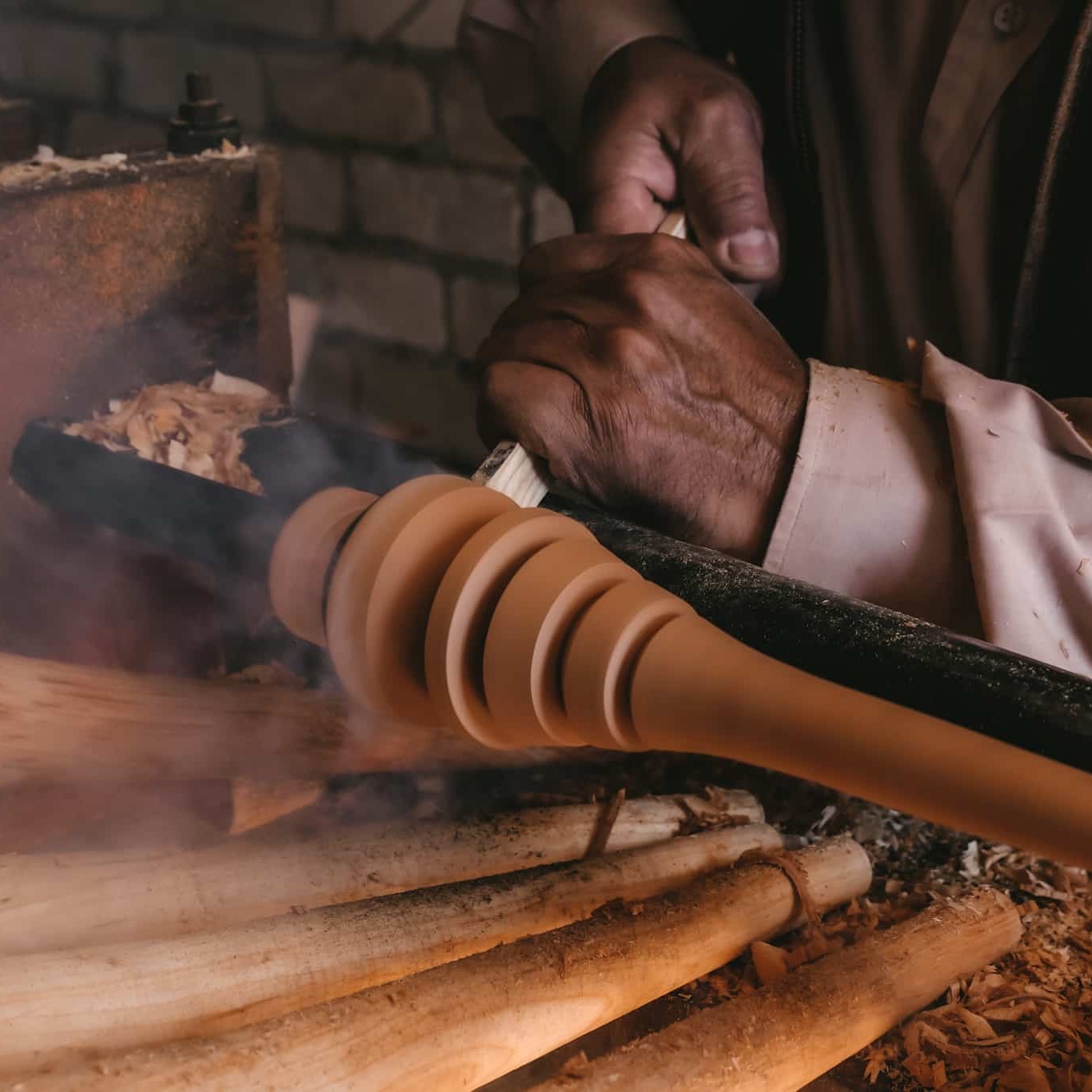
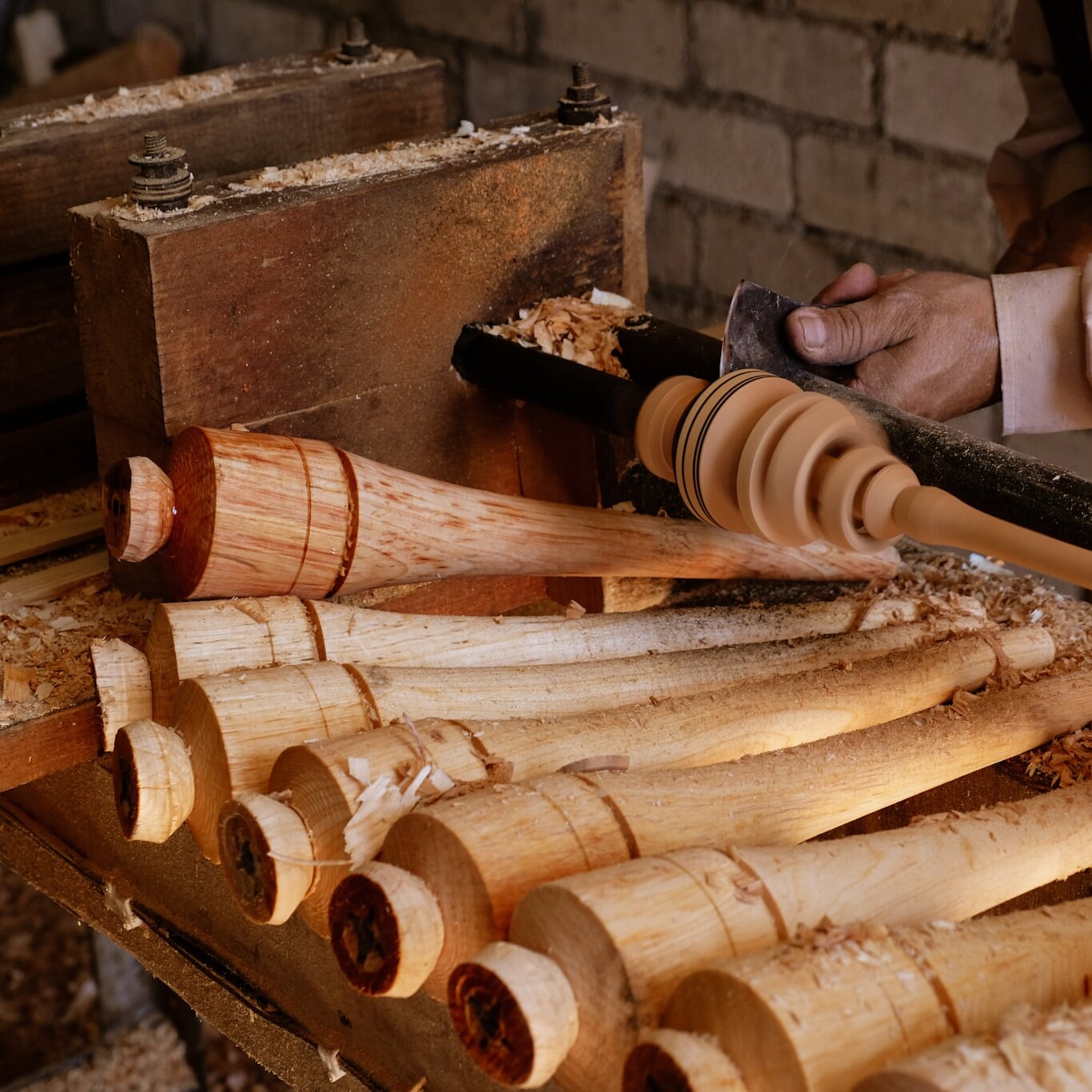
Don Jesús takes off his hat and shows and explains how he makes a Molinillo. After he personally selects the wood, the most difficult thing is to cut the hard wood into smaller pieces that are suitable for further processing. His brother-in-law, Evencio, roughly cuts the pieces and prepares them for the lathe that Jesús uses to make different types and sizes of molinillos. His wife Arminda decorates the wooden utensils by burning beautiful patterns into them. Meanwhile, his daughter Sandra takes care of the molinillios, which are used less for decoration than for use, and lovingly paints them in bright colors and patterns. We feel that it is very important for Jesús to demonstrate his work. He shares how in the past, to sell his products, he had to find customers and walk into town from his community. That was a whole day's journey. Now it's the customers who drive from the city to his workshop and he smiles proudly.
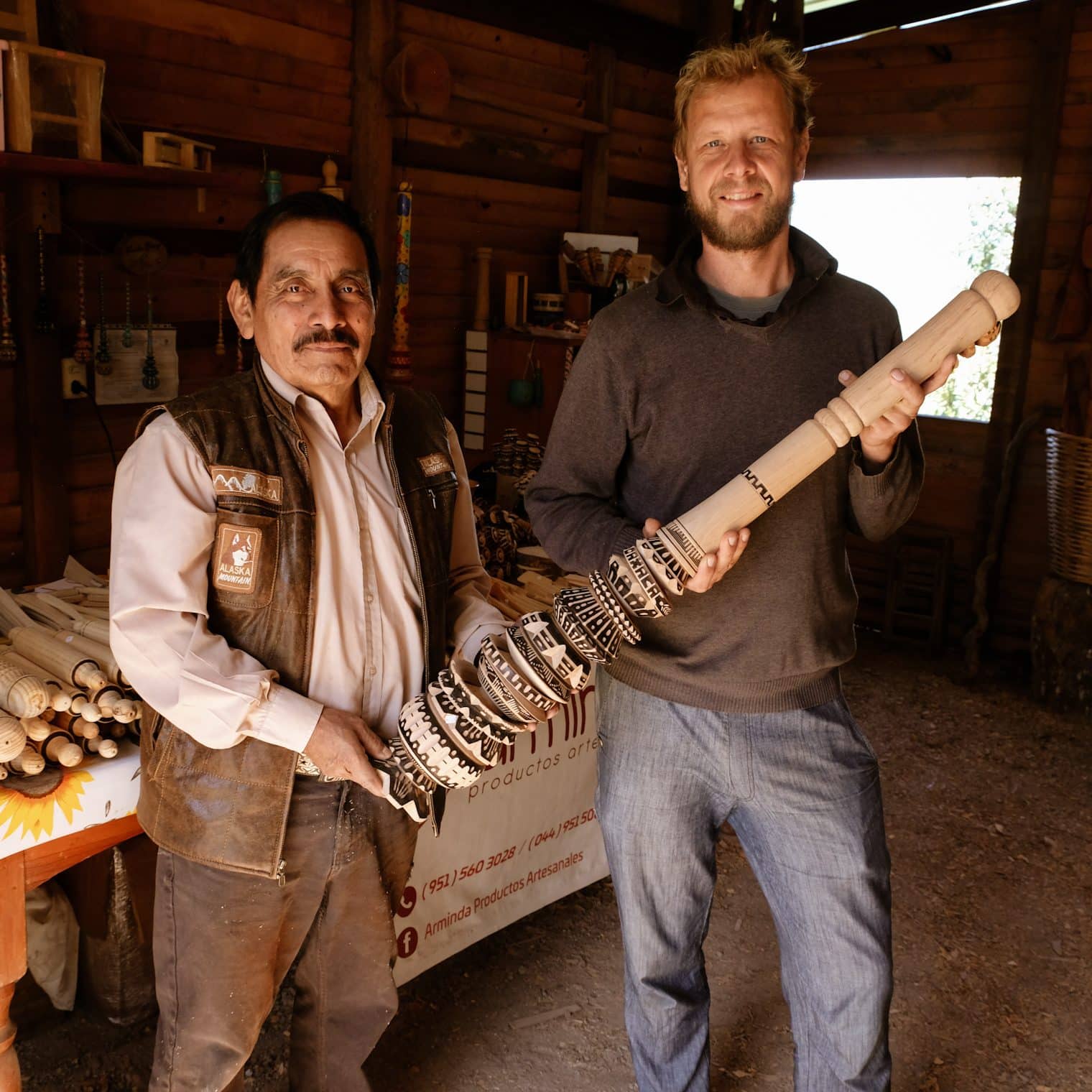
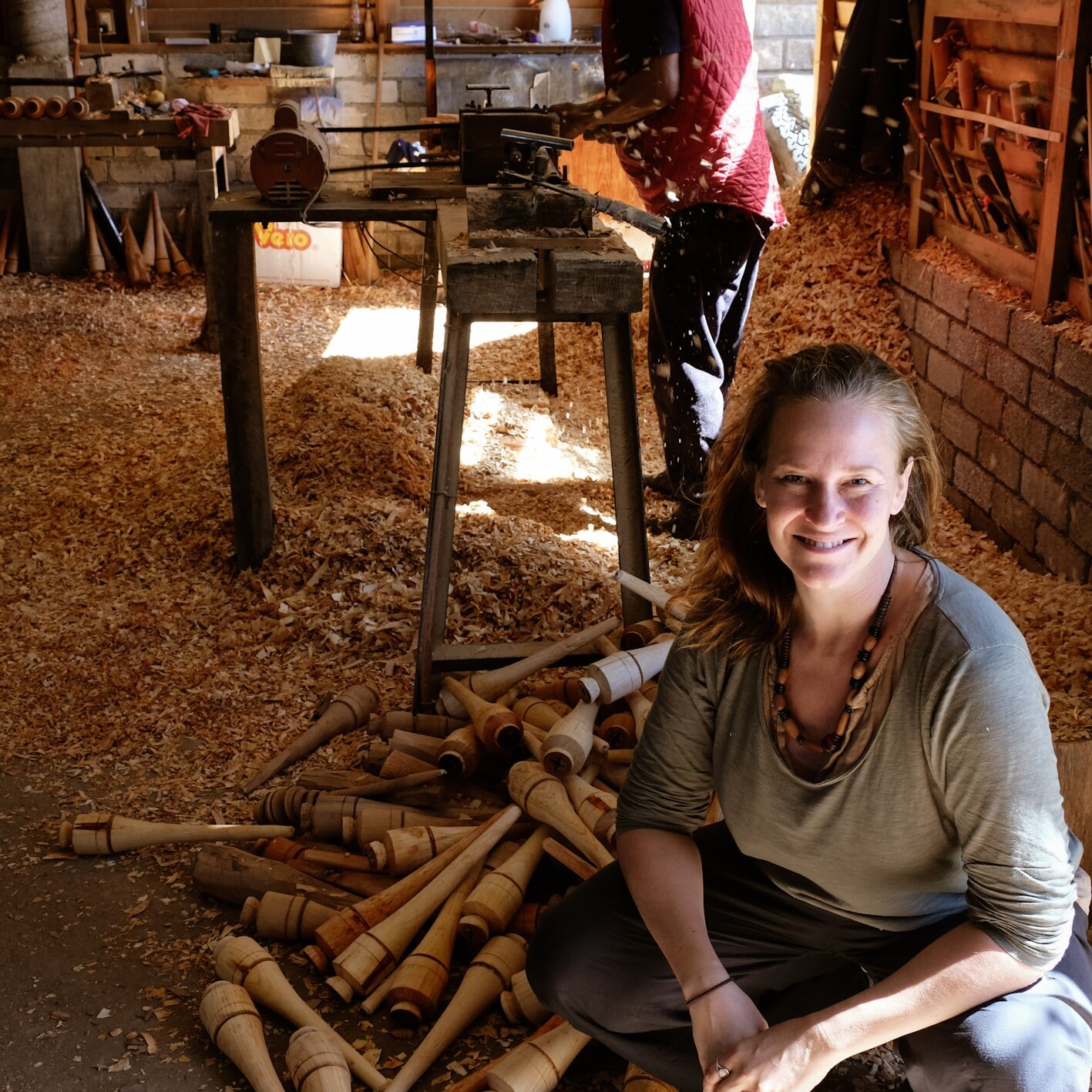
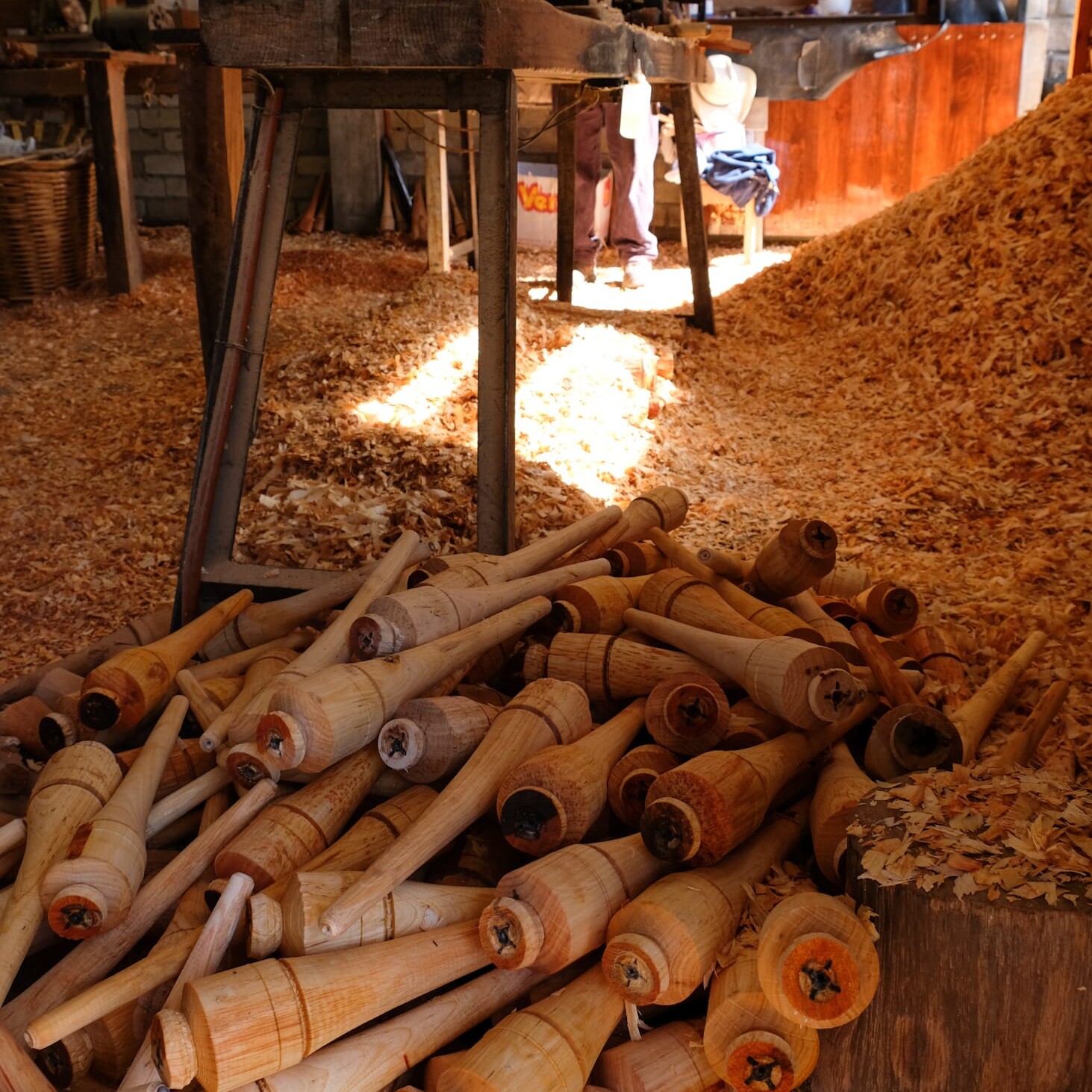
Don Jesús demonstrates his passion for his craft with the care he puts into each of his pieces and with the pride and almost childlike joy as he talks about his work. "We're always working," he says. "because it is less a tiresome work than a fulfilling life for us". Wallo and I can only understand that. Everything here seems peaceful, loving, relaxed. We can't help but imagine having a small workshop ourselves, where our hands work while our minds switch off, surrounded by equally wild, soothing nature. We leave the workshop and go into the small garden filled with flowerpots and Jesús concludes by saying: “It gives us great pleasure to teach our children and grandchildren the technique and tradition of making molinillios, here, in our small workshop. Now we offer our customers the best. I intend to continue doing it because I really enjoy it and I've gotten my kids interested too.”
Arminda brings us freshly picked pears and 2 stools. We sat down and enjoyed the fresh fruit. Wallo and I smile. It cannot be overlooked that everyone enjoys their work here. We are incredibly lucky to have had the opportunity to meet and get to know Jesús Torres Gómez and his family. And we are most pleased that we can now share their story with you and thus actively and directly build bridges between their traditions and their handicrafts and our western culture.
Would you like to give your life a new depth with our cocoa and the Molinillios made by Jesús and thus support this project and his family?
We are very happy about your purchase!


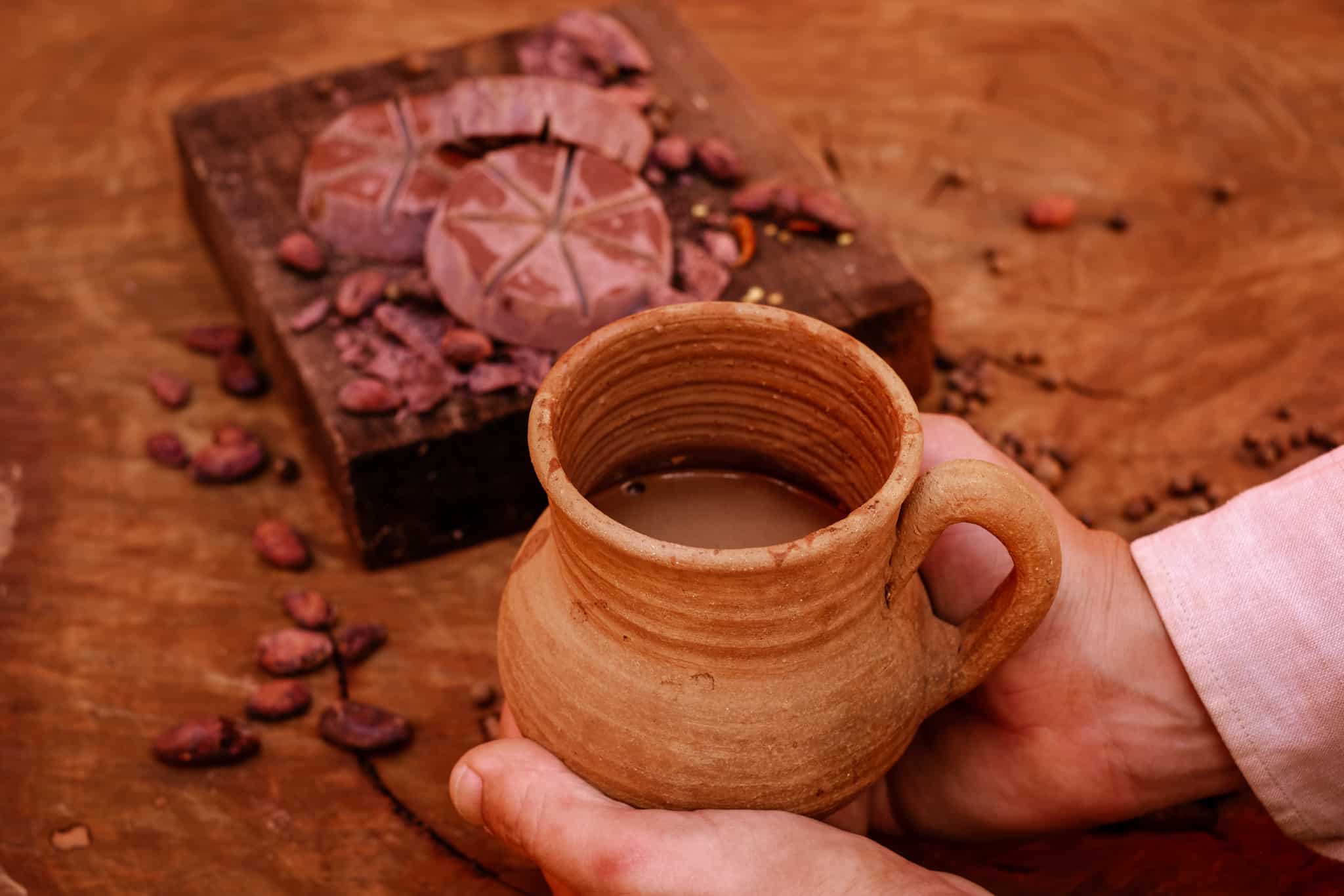
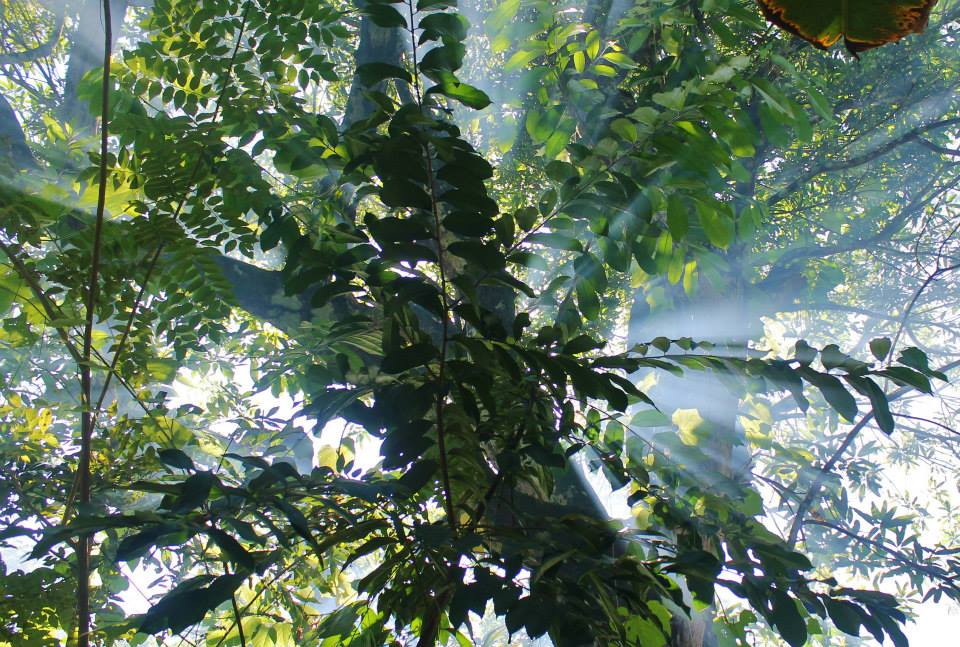
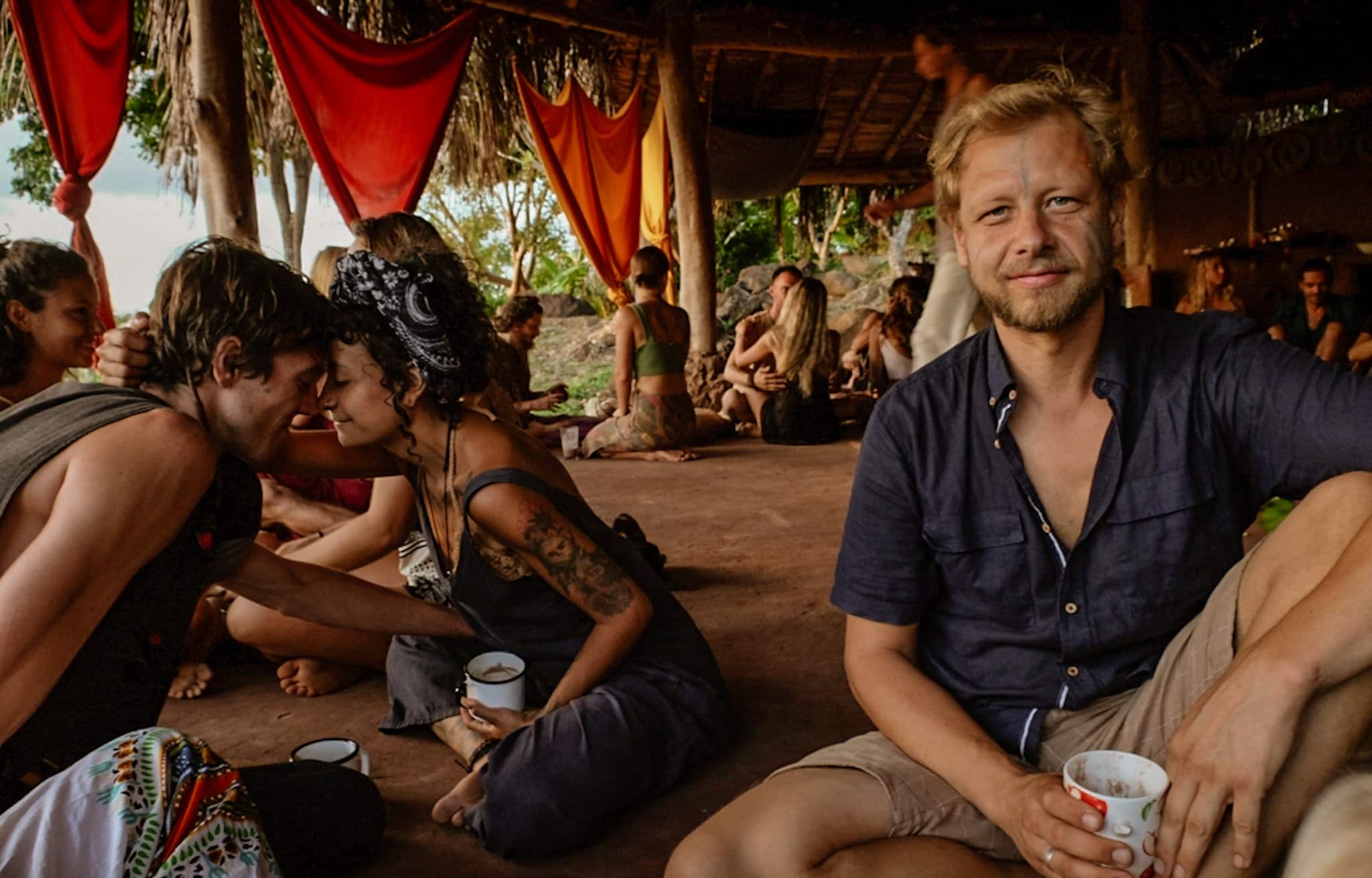

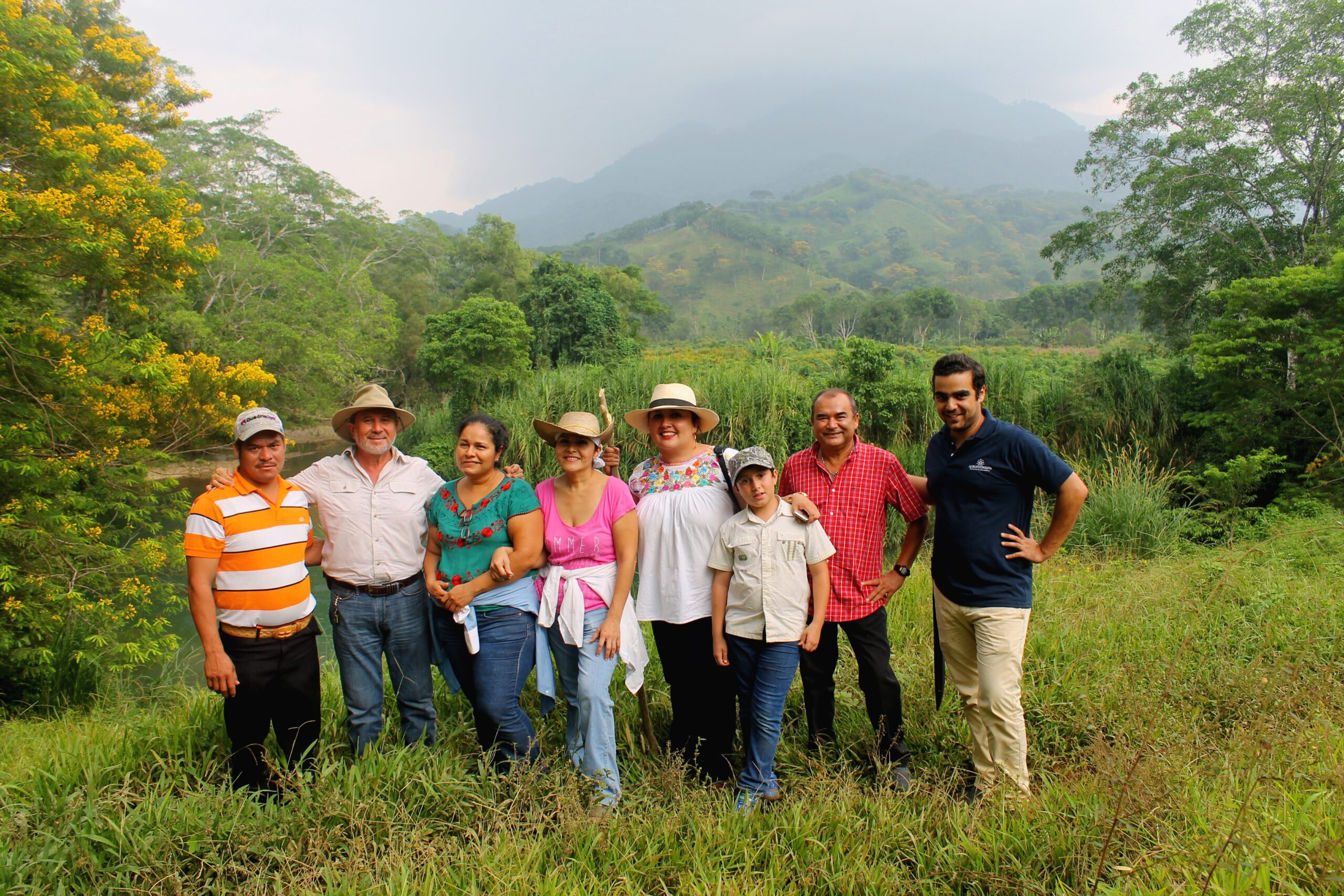
cq1mqb